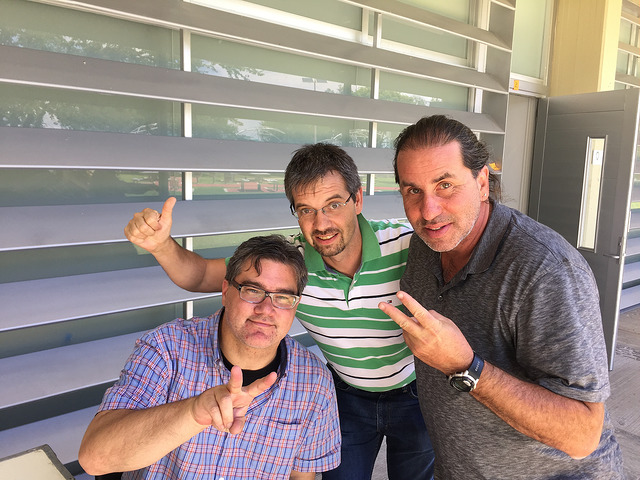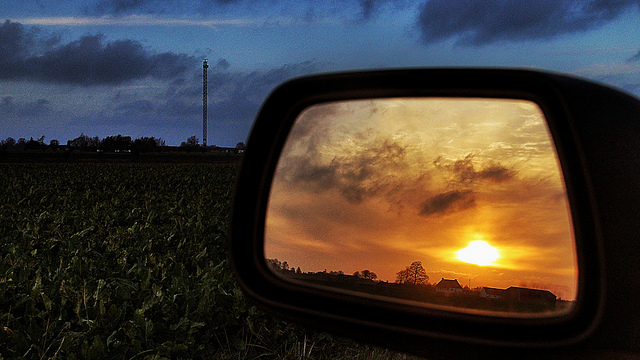Looking Back
I truly believe that reflection or looking back is an important part of our learning process. Taking time for reflection allows me to connect what I’ve learned in the past with my plans going forward. I’m reminded again of why I changed the title of my blog to “Connecting is Learning” and will once again give credit to that change to my good friend Laura Goglia who has been a key influencer on my this past year. Follow through her tweet to her post and you can even read my comment on that blog post or you can just go straight to her post “Lessons Learned 2016”.
So. More for me than anyone else, but if you're interested, I made a graphic on the lessons I learned in 2016. https://t.co/ijj6o4tGPx
— Laura Gogia (@GoogleGuacamole) December 27, 2016
Constant Change
Each year I make a decision to implement some major shift in my pedagogical practice and that could involve tools or process. I wrote about the changes for 2016 (late in August due a blogging hiatus) in a post titled “Connected and Going Native?”, back in 2015 in “A New Semester, A New Year”, in 2014 with “Start of a New Year” and a somewhat related first real post back when I started this blog in 2013 with “5th Interchange of Educational Experiences”.
I really need to write some more about my experiment with #AbolishGrading from 2016 and will soon. This was a very interesting exercise which I am adapting to my 2017 plans with feedback from students. If you want to get my students’ voices about last year, please go read my most recent post “Giving Students an Authentic Voice”, that post is a great place to wrap your head around how my classrooms work (and sometimes don’t).
Also, take time to look at the work of Joe Bower related to abolishing grading and so much more. We lost an inspirational teacher this time last year when Joe left us.
FOLE
A change that I do want to make for my courses in 2017 is to swing the pendulum a little more towards guiding the students instead of the almost complete control of the learning pace that I provided last year. Many students excelled under a free system but others were lost. My role in and out of the classroom is as the guide of each student’s education and some of them need more structure than others. I love the term “Facilitator of Learning Experiences” as my friend Keith Hughes puts this. Upon reflection over my past year I must acknowledge that some students need more scaffolding than others.
#TeacherTip 298. Start referring to yourself as a FOLE instead of a teacher. #FacilitatorOfLearningExperiences https://t.co/uIDLqtc0Ei
— HipHughes (@hiphughes) August 22, 2016
Daily Challenges
I actually had setup the mechanics to implement Daily Challenges for my courses last year but decided to not implement too many tools at once. Not just for my students’ sanity but also my own. While doing work with faculty in professional development workshops and courses I preach to not implement too many new tools or changes at once. I’ve also learned to follow my own advice.
Alan Levine has had a deep impact on the way I teach, the way I give credit to others and has spent time hanging out with my family in December of 2015 and 2016. He is a genuinely giving person and if you don’t follow his work then *run*, don’t walk to check out his blog.
The Daily Create started on the DS106 course/site/experience which started back in 2010 involving Jim Groom, Martha Burtis, Paul Bond, Alan Levine and many others. I was not involved in the project so I invite any corrections to my distortion of history here. Go read the history of DS106 yourself.
I worked with Alan (and Nancy, Brian, Tannis, Barb, Terri, Kike, Sandra) on the UdeG Agora project in 2015. Alan’s work with Brian Lamb was how I found out and fell into this amazing world of connected courses and open education, Brian Bennett plays a key role in that story as well. The Agora experience blew my mind and opened so many doors and lead to more experimentation with my class. Alan wrote about the Daily Creates for that project and I’ll quote the start to give you a taste of the idea:
Another part of my bag of tricks I brought to the UdG Agora was setting up a site modeled after the original DS106 Daily Create (which is itself a derivative of the defunct Daily Shoot).
This idea is something I have kept close for quite some time, that establishing a regular creative practice done daily, helps you get better at it. There is nothing revolutionary there (do not ask me if I run every day). It’s not the sheer repetition like a windup Gladwell monkey, it’s got to have some small bit of reward. There ought to be such a low consequence of failure that its not visible. It’s a provocation to try something.
That’s why I called it The Daily Try (failing to find a more appropriate Spanish name). The site published and publishes every day a small task to try, using digital media skills, or just the old grey matter in your head skills.
Of course since Alan is always tweaking (looking back?) and working on ways for others to replicate and modify his own work he wrote about (and coded) “The Daily Blank” setup for WordPress. Marvelous. I could point to specific posts but I might as well demonstrate how we can link to a tag or category (in this case the dailyblank tag on Alan’s site) of posts in a WordPress blog.

Your Turn
Go ahead and write your own blog post (or some other format) on looking back on 2016, I would love to read it. Feel free to link that and/or comment on my post in the comments below.
Featured Image Credit

Hi Ken,
I generally resist writing end of year summaries, favourites, anythings…, but took up the challenge/invitation. Here’s my year in an acorn shell: https://wp.me/p4Ng5z-Ol
Laura
Thanks Laura, and especially for leaving a link to your post!